This post contains affiliate links to products I recommend. Read my full disclosure statement.
Learning to add money, make change, and compare money amounts are skills that are coming up in our money unit. I’ve been working on putting together lots of fun games and engaging opportunities to practice. Here are some money activities for second grade that I’ll be using. These activities will have your students learning about money without even realizing it!
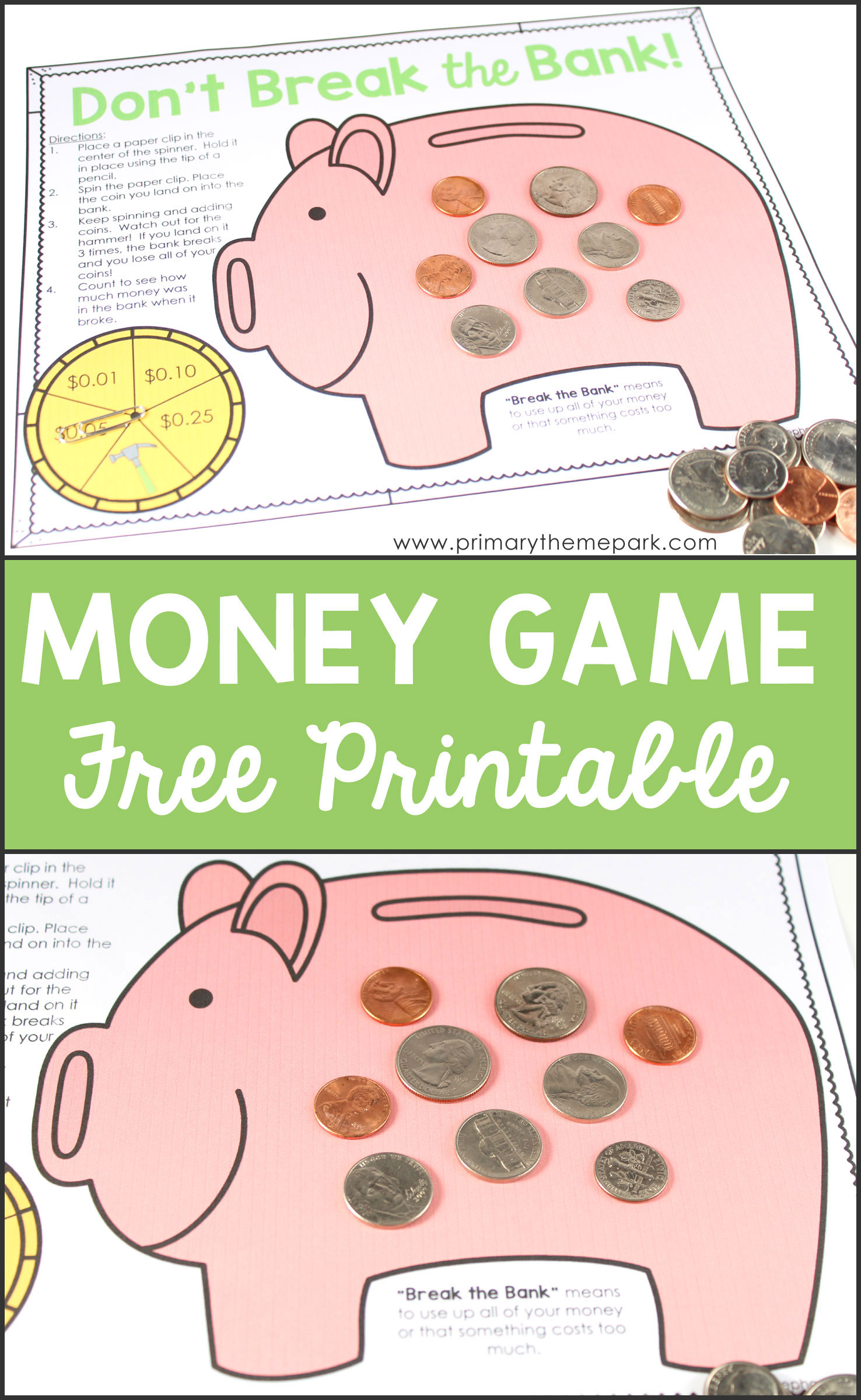
Don’t Break the Bank
Materials:
- Don’t Break the Bank game board
- real or fake pennies, nickels, dimes, and quarters
- paper clip
- pencil
How to Play:
- Students place a paper clip onto the center of the spinner and hold it in place with the tip of a pencil.
- They spin the paper clip and place the coin they land on onto the piggy bank. They keep spinning and adding coins to the piggy bank.
- Watch out for the hammer! If students land on the hammer three times, it breaks the bank! The game is over and students count up to see how much money they collected.
Students may like to play the game more than once to try to see if they can get more money into the bank before it breaks again. They can also play with a partner or group. The person in the group who gets the most money into their bank wins the game.
You might explain to students that long ago some people stored their money in ceramic piggy banks. These banks did not have a removable plug like the ones today. The only way to get the money out of the bank was to literally break the piggy bank. Today, the phrase “Break the Bank” means to spend all of your money or that something is too expensive. It’s a great way to throw in a little mini-lesson on idioms!
More Money Activities
- Play “What’s in My Wallet?” This is a fun game that your students will love. Tell students the number of coins and/or bills that’s in your imaginary wallet and have them try to guess the amount. For example, you might say “I have one bill that is under ten dollars and two coins. What’s in my wallet?” Then students try to guess the bills/coins and amount. You might provide younger students with more clues: “I have one dollar bill and two coins that are less than ten cents.”
- Money Scavenger Hunt: Hide a certain amount of coins and/or bills around the room. Tell students how many coins and/or bills are hidden and let them go find them. After finding all of the coins and/or bills, they add up the amount.
- Shopping Trip: Give students store sale ads. Tell them they have a certain amount of pretend money and let them go shopping! Have them draw and write about what they were able to purchase, how much money they spent, and how much change they had left.
- Money Videos: Watch videos and learn songs about money using YouTube. I’ve put together a collection of videos I think are perfect for this here.
Here are a few of the other money games and activities that I’ll be incorporating into our unit:
Dollar Dash
This quick, print-and-go game has students roll a die and add the money amounts together until they get to $1.00. I also created a Five Dollar Dash, too, where students race to add up to $5.00.
What’s in Piggy’s Bank?
Another no-prep game that has students roll a die, graph the coins they land on, and then total up all the coins to see how much money is in the piggy bank.
Take It to the Bank
Students roll and move around the game board, adding money amounts as they go. The student that collects the most money by the end of the game wins.
Farmer’s Market Task Cards
This will be my first time using task cards and I couldn’t be more excited! Students use a picture of a girl at a Farmer’s Market with different fruits and vegetables for sale to complete the 24 different task cards. Four of the task cards have open-ended questions that require students to give a longer written response.
Piggy’s Bank Write-the-Room
Write-the-Room is always a favorite of my kiddos. 20 numbered piggy banks are placed around the room. Students search for the banks, count the coins on each one, and record their answers on the recording sheet.
Spin and Spend
Spin and Spend is another easy, no prep game. Student spin the spinner and subtract the amount they land on from the amount on a piggy bank. I also made a version that uses dollar amounts.
Coin War
My kids have actually played this one already and they LOVED it. As soon as they finished, they asked, “Can we play this again?” “Of course!” I said. So they sat back down and played another round. I loved hearing them chant “1, 2, 3, 4, let’s have a coin war!”
Played like the card game War, students each turn over a card from their pile. They count the coins on their card. The student with the highest amount keeps both cards. They keep playing until all their cards have been turned over. The student with the most cards at the end wins.
I hope these games and activities are helpful to you when you’re teaching money. You can download the first game “Don’t Break the Bank” for FREE by clicking the link below.
CLICK HERE TO DOWNLOAD “DON’T BREAK THE BANK”!
A black and white version is also included in the download if you’re concerned about using colored ink. Students might enjoy coloring it.
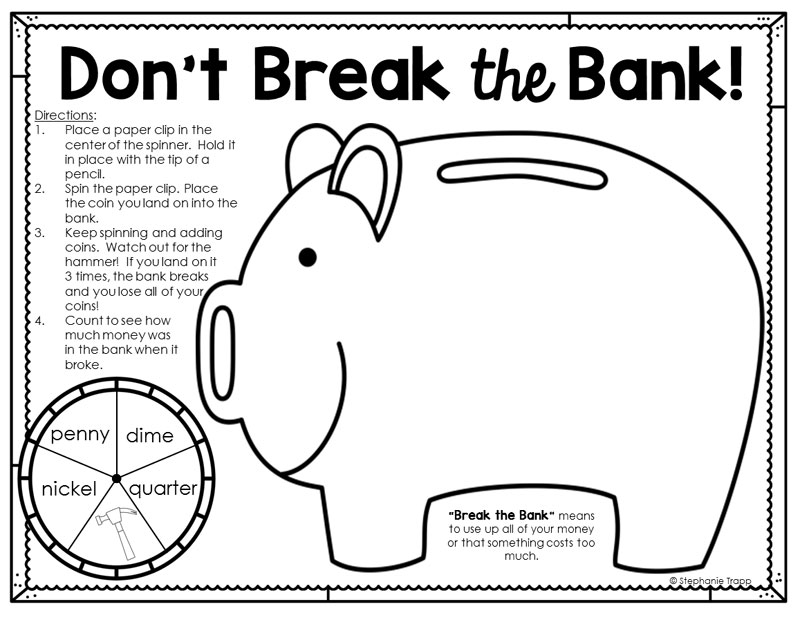
All of the other games can be found in my Money: Centers, Games, and Task Cards product in my TPT store. It comes with all of the directions and templates you’ll need to create these activities, plus ideas for how to differentiate each game for special needs learners and above level students.
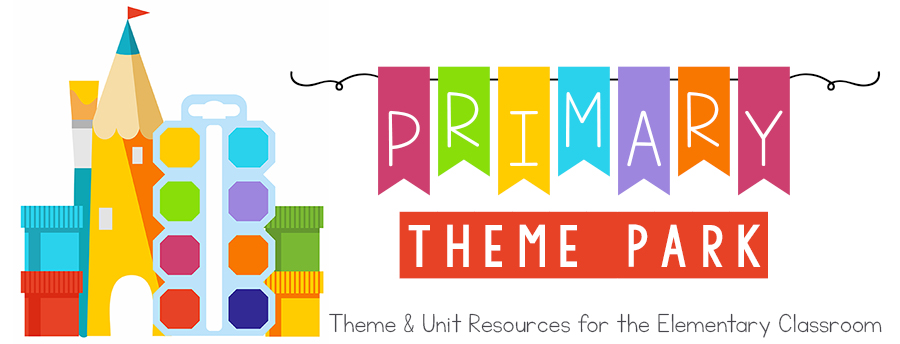
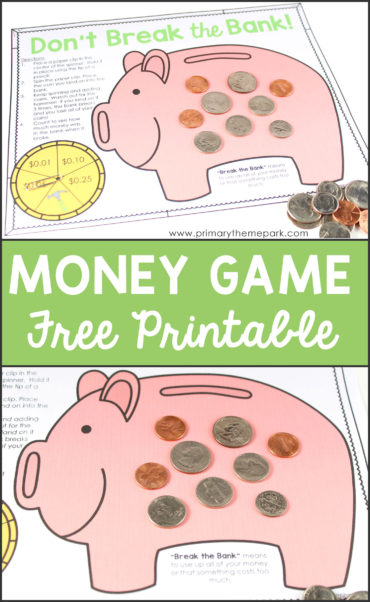
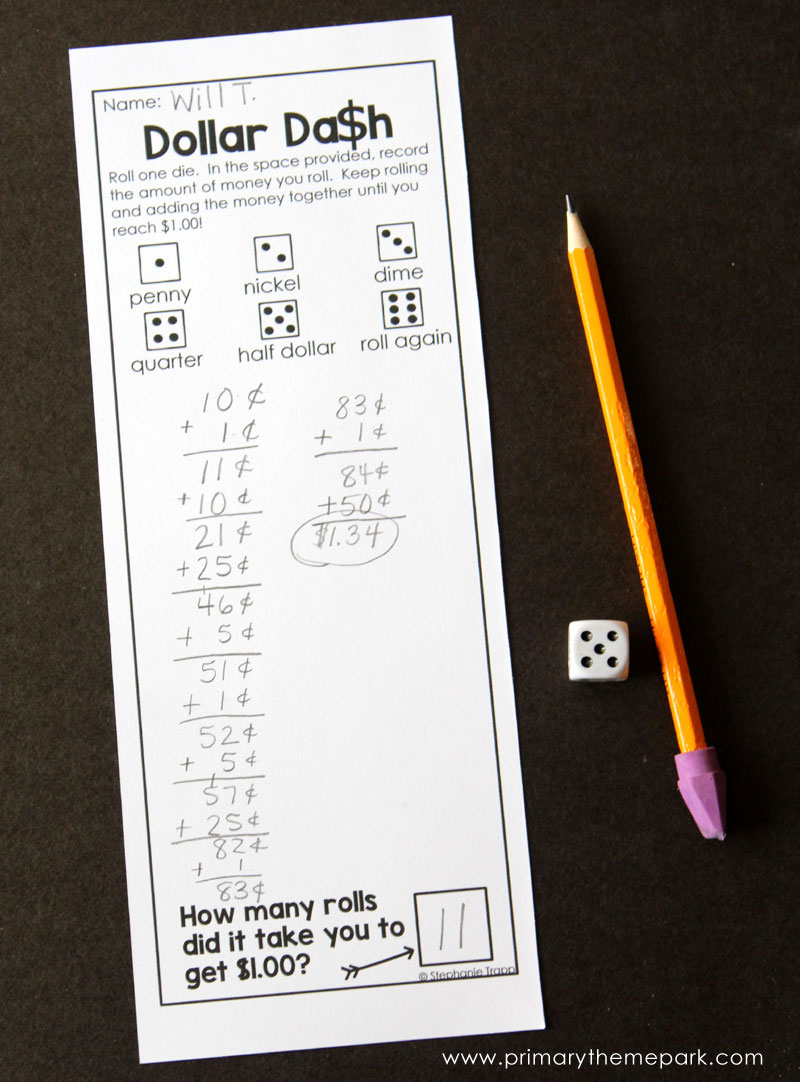

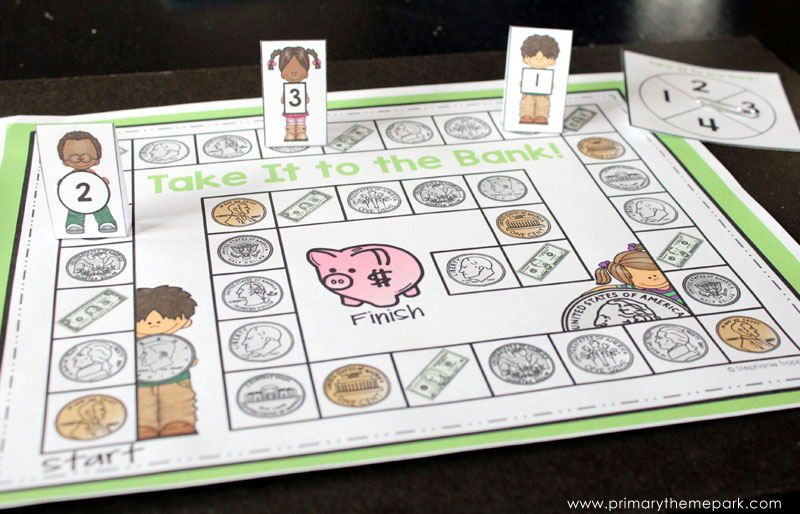
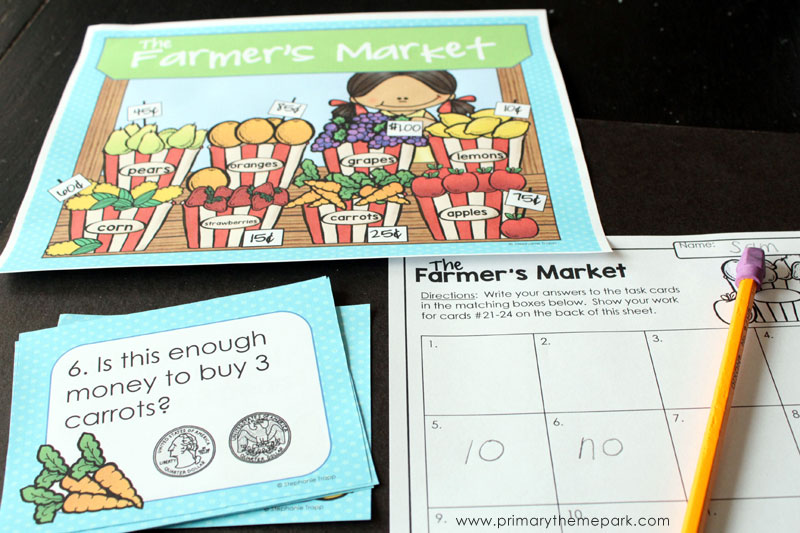
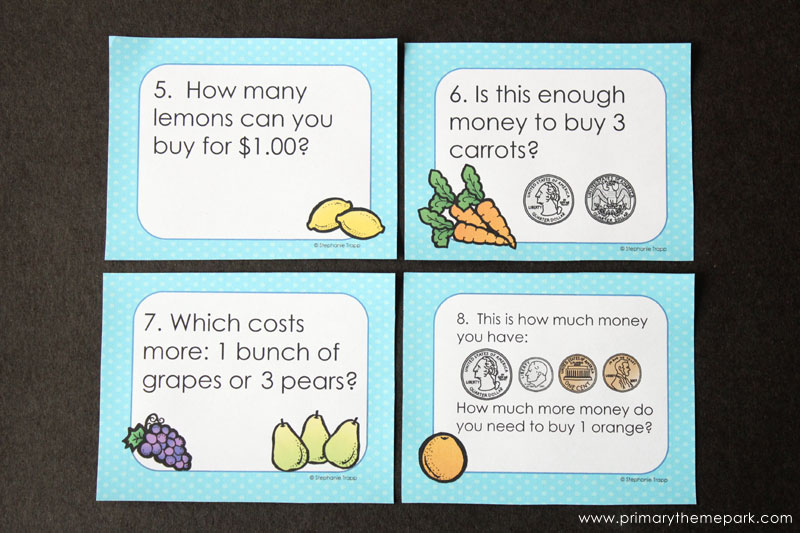
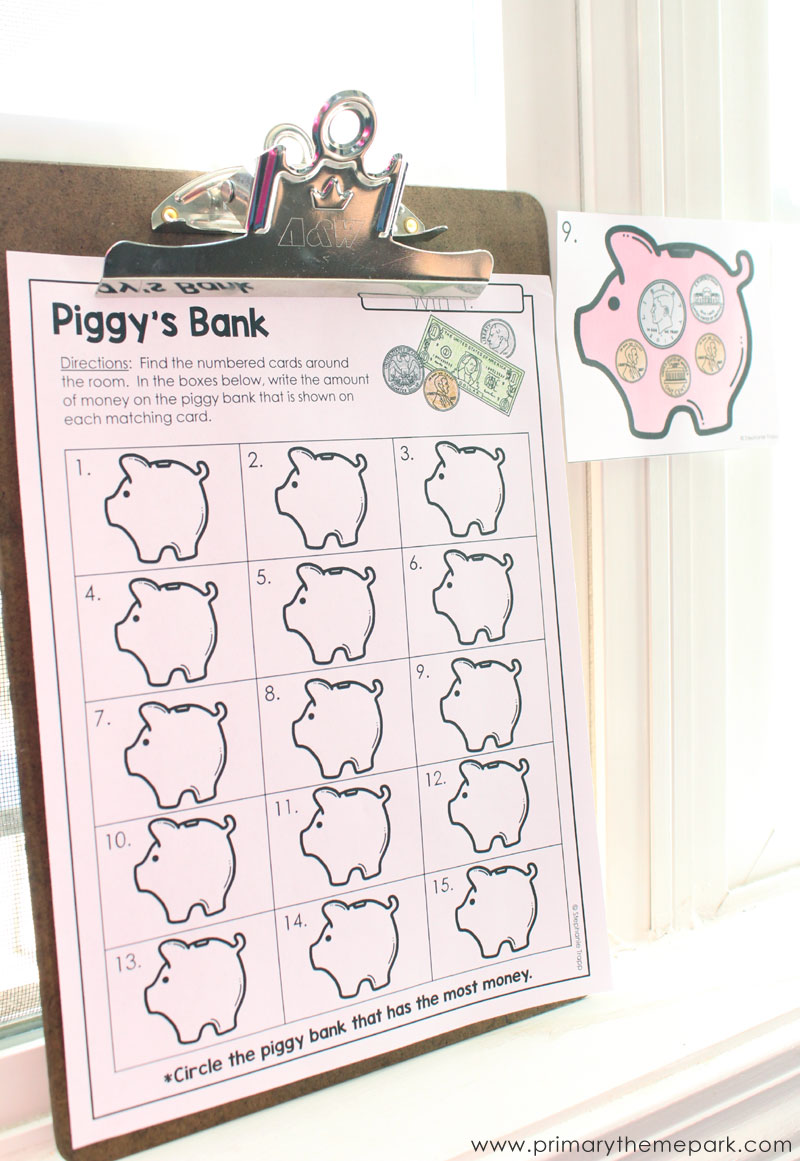
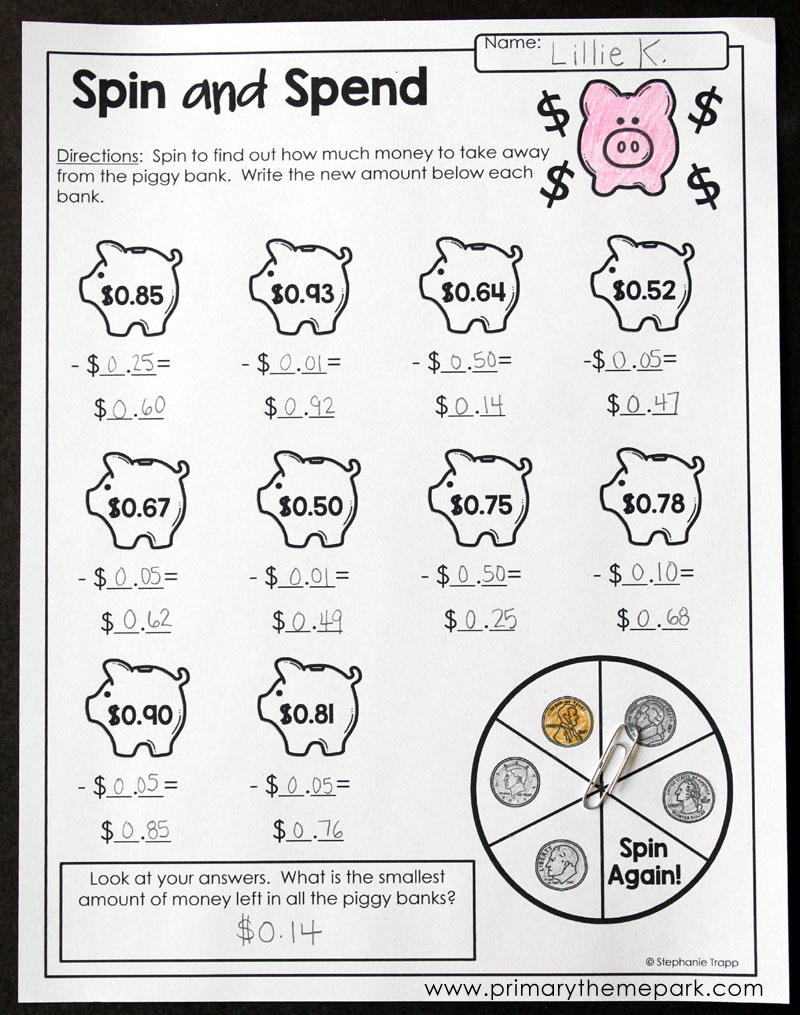
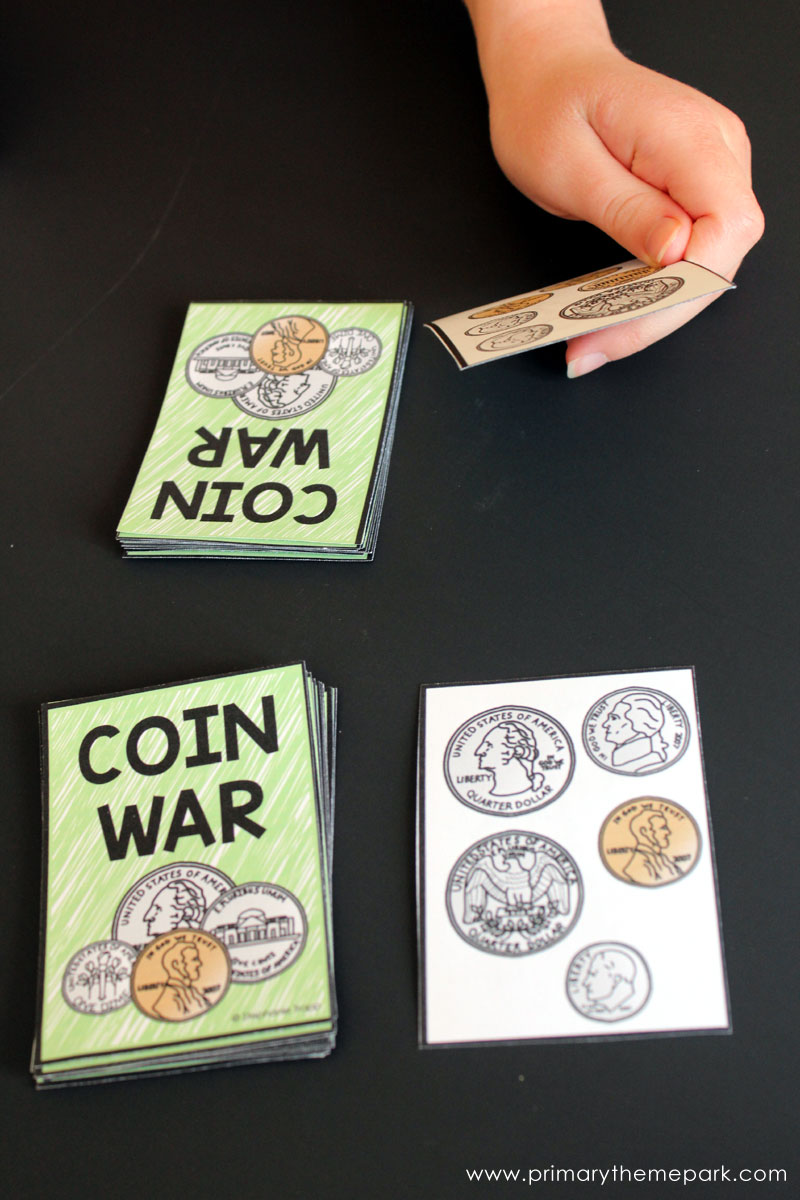
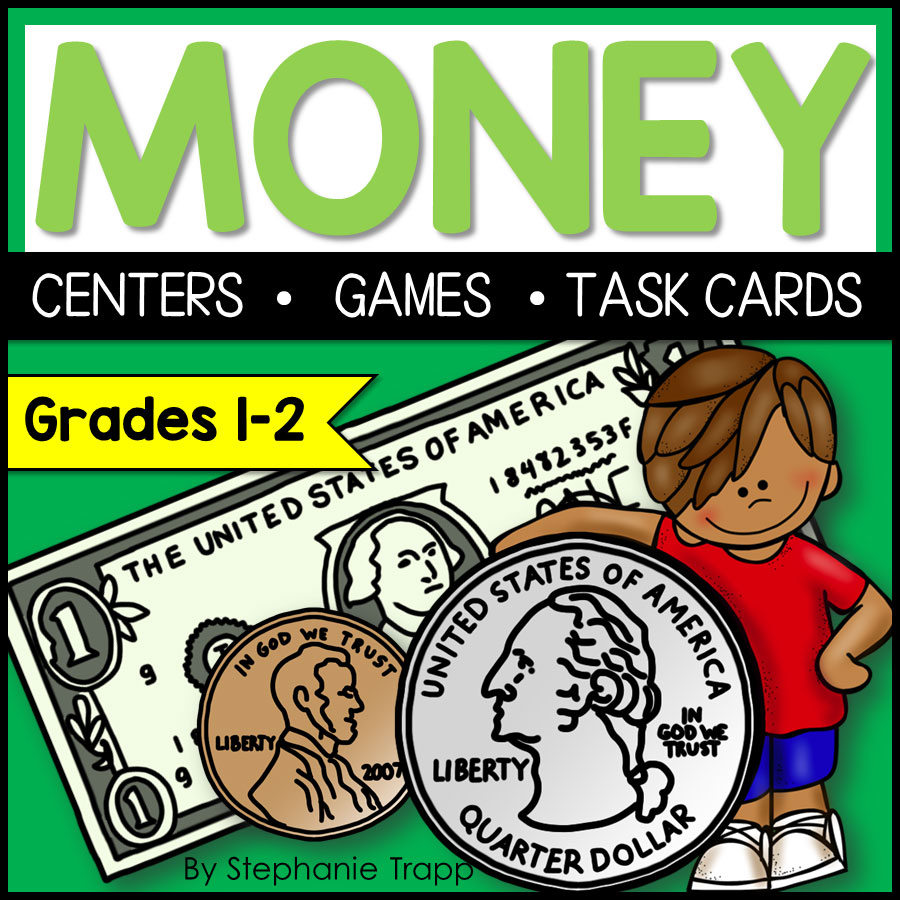
43 Comments
How can I get a copy of your “Coin War?”
Hi, there! The Coin War game is part of my money math centers pack that I sell on Teachers Pay Teachers. Here’s a link to the product: https://www.teacherspayteachers.com/Product/Money-Math-Centers-Games-and-Task-Cards-2360328 I appreciate your interest in the game and hope it’s a resource that your students will enjoy!
Have you considered selling the games individually on TPT? I don’t need 119 pages of printables in that link. Don’t have the ink for it haha.
That’s a good question! I do have the coin war game for sale by itself on TPT, but I have any of the other activities listed individually.
wondering if you have to land on the hammer three times in a row or altogether before you break the bank? Sorry, I am a little confused by the direction because it seems like the band would overflow if 3 times in a row.
That’s a great question. I’ve done it where the bank doesn’t break until you land on the hammer three times, but you can easily change the directions and tell students the bank breaks if they land on the hammer once. Hope that clears it up!